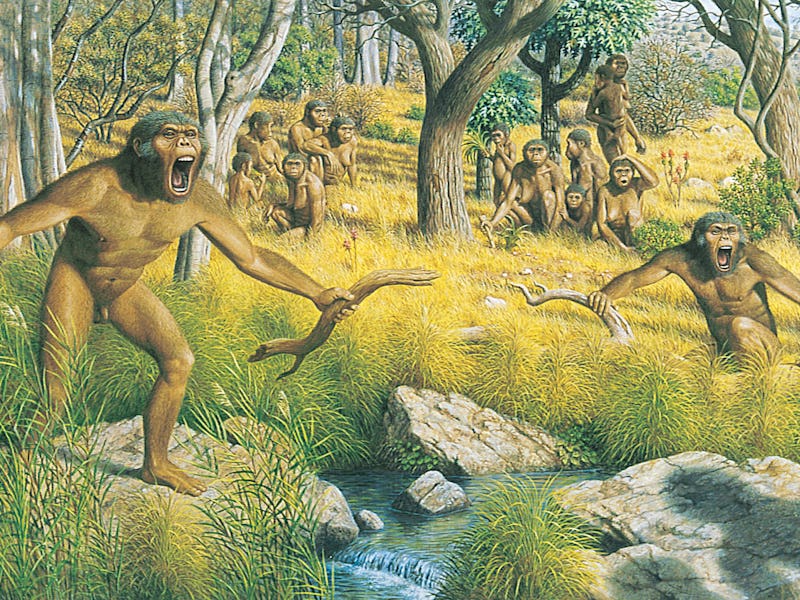Lucy the Human Ancestor Swung From Trees Like a Chimpanzee
She was adept at climbing and walking.

New digital scans of humanity’s favorite pre-human skeleton Lucy show that she spent a fair bit of her life climbing trees despite also walking on her two feet. Researchers looked at her 3.2 million-year-old Australopithecus afarensis bones to examine how their internal structure grew in response to the stresses of daily life and found that Lucy used her arms to pull herself up a lot more than modern humans, but not as much as a chimpanzee. The results were published Wednesday in PLOS ONE.
How and when early hominid species switched from tree climbing to forest running is still a matter of significant debate in the field of archaeology. It’s hard to say if traits best suited to tree life — like long forelimbs — persisted in ancient cousins like Lucy because they still used them, or if they were just a genetic hand-me-down that no longer served its function.
That’s why, for this project, the researchers sent Lucy’s bones through a high-resolution CT scanner in order to peer into their internal structure. There are clues inside that point not just to genetics but to usage; our bones, like our muscles, actually grow bigger and stronger when we put strain on them.
Lucy's skeleton is amazingly complete for a hominin fossil of her age.
“It is a well-established fact that the skeleton responds to loads during life, adding bone to resist high forces and subtracting bone when forces are reduced,” said senior author John Kappelman with the University of Texas, Austin in a release. “Tennis players are a nice example: Studies have shown that the cortical bone in the shaft of the racquet arm is more heavily built up than that in the non-racquet arm.”
The authors believe that Lucy was skilled at climbing, and may have spent her nights sleeping in trees to avoid predators. She also likely did some foraging up in the trees. She may have depended on her upper body strength even more than a chimp, since her legs and feet were built for walking, not holding on to tree limbs.
Other recent research, however, suggests that her climbing skills weren’t quite good enough to save her life; analysis of her arm bones show that she very likely died from the impact of a long hard fall, probably from a tree. Would feet better adapted to grasping branches than walking have saved her? It’s impossible to say for sure — even the best simian climbers today will occasionally have a fatal tumble. Lucy’s downfall was equally her enduring scientific gift.
The researchers also found that Lucy would have had a less efficient gait than humans today, shifting her weight further from side-to-side with each step. This research goes to show that at least some of our ancient cousins made the best of both worlds: the treetops and the solid ground below.